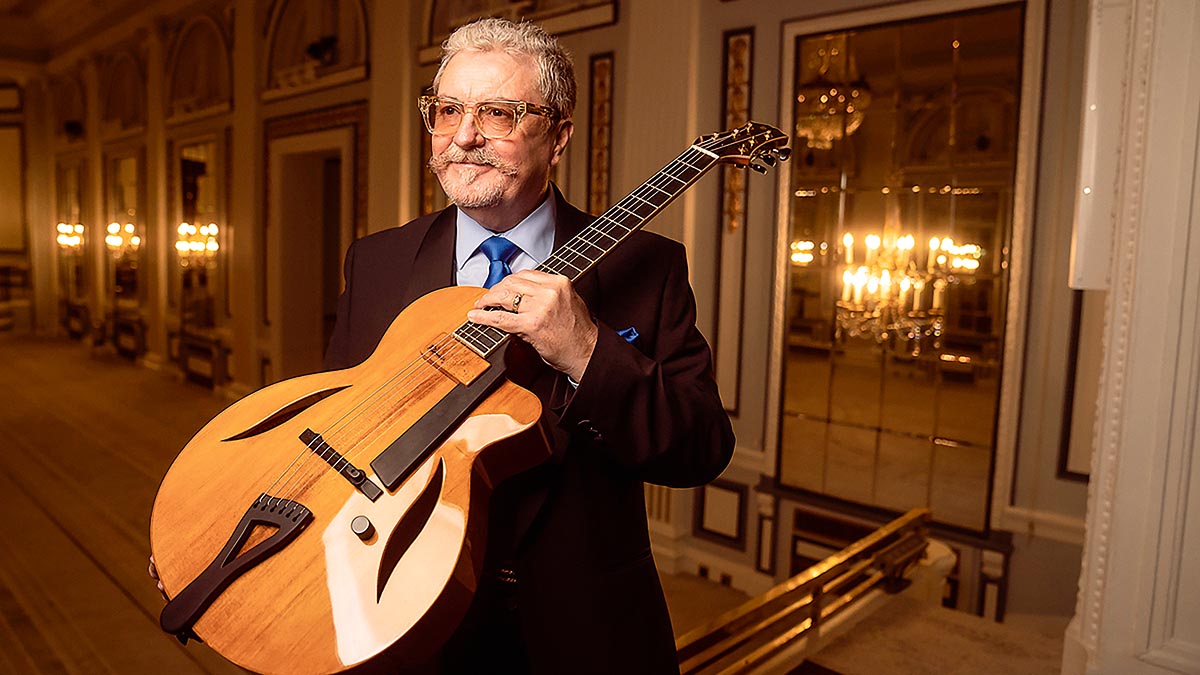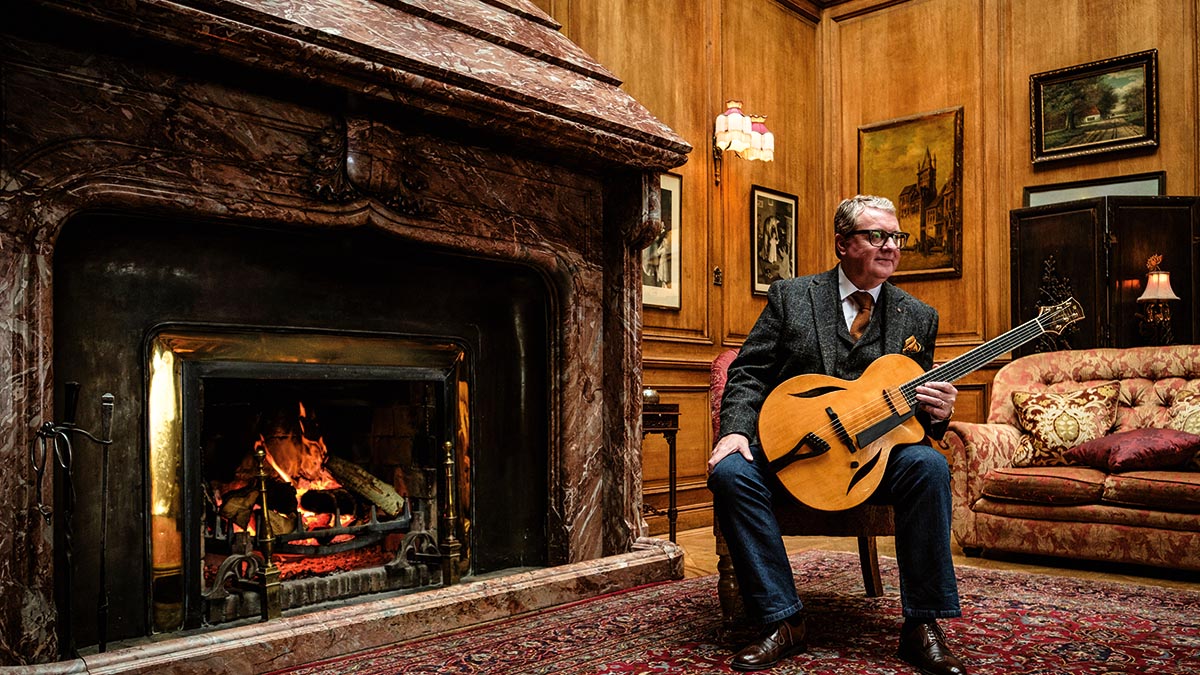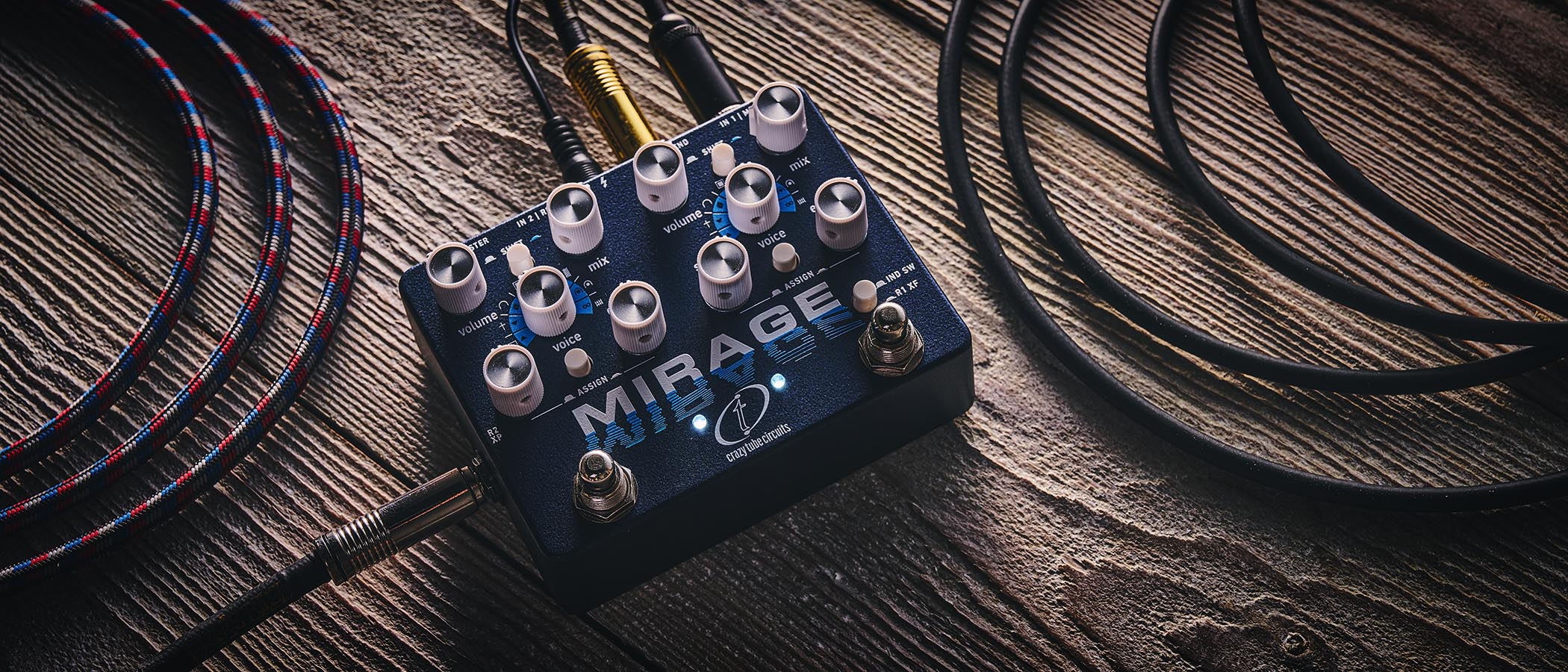Martin Taylor: “There are some guitars I play a few notes on and just put down. The sign of a good guitar is one you really want to play and don’t want to put down”
The jazz maestro recounts the tale of a disappointment with a Gibson ES-175 and his surprise over a freebie vintage Martin

In this instalment of Bought & Sold, the jazz guitar phenom Martin Taylor joins us to discuss his greatest gear hits and misses, his go-to instruments, buying philosophy, and confesses to not having much need for an amp.
But as he says, don’t let the lack of wattage fool you – he’s a lot more rock ’n’ roll than you might think.
What was the first serious guitar you bought with your own money?
“Well, from the age of 11 I started playing in my dad’s band, and we were playing at weddings and village hall dances and things. I got paid the same as the rest of the guys, which was anywhere between £3.50 to £4 – £4 was a good gig, we never hit the £5 mark.
“At the time I had a really terrible guitar with a real cheese-cutter action, but I just saved up and eventually I had 100 quid and so I went with a friend to the West End of London to a music shop at Centerpoint. The guy in the shop says to me, ‘Hey, what are you boys doing?’ And my friend said, ‘He wants to buy a guitar.’ The guy said to me, ‘How much do you want to spend on it?’ I said, ‘£100.’
“That was too much for him, for some reason he was so pissed off at me that he threw me out onto the street. So I went to Ivor Mairants’ shop and Ivor showed me a Guild Starfire Deluxe, and he said, ‘I’ll give you a case, a strap, a set of strings…’ and there was a capo in there, too. So that would have been in 1968.”

What was the last guitar you bought and why?
All the latest guitar news, interviews, lessons, reviews, deals and more, direct to your inbox!
“I bought a guitar from Rainbow Music in Dundee a few months ago because I was doing my annual Scottish guitar retreat and one of my students was coming from Canada and he didn’t want to bring a guitar with him. So I went in and I bought a Cort acoustic guitar. I tried it and it’s really nice. It sounds good and it’s very playable. So that’s a guitar that I actually keep here in case anyone needs a guitar at the retreats in the future.”
What was the most incredible find or bargain you’ve ever had when buying guitars?
“Well, I was given a 1929 Martin 000-45 when I recorded the ‘Blue Guitars’ from the Scott Chinery guitar collection [featured on the album Masterpiece Guitars by Martin Taylor and Steve Howe]. When Steve and I had finished the recording, Steve said, ‘Could you swing by Scott’s house before you go to the airport because he wants to give you something.’
“So I went by and we sat down and there was an old battered guitar case. Scott said to me, ‘I like hearing you play the flat-top guitars, so I’d like to give you this as a little present.’ I opened the case and it was this Martin. I don’t know anything about flat-top guitars, so I said, ‘Oh, that’s really nice, thank you very much.’
“I didn’t realise what I had. Later on, Steve rang me and asked what Scott had given me and I said, ‘I’m not sure, let me have a look. Oh, it’s a 1929 Martin 000-45.’ And Steve went silent on the other end of the phone. Then he said, ‘I’d hang on to that if I were you…’”
What’s the strongest case of buyer’s remorse you’ve ever had after buying a guitar?
“When I went to America for the first time in 1973, I went to the guitar stores on 48th Street [in New York City] because I wanted to get a Gibson ES-175. And so I’m in the shop and I saw this one hanging up on the wall, but it wasn’t the antique sunburst finish, it was kind of a red sunburst.
“I didn’t play it very much and I asked how much it was and the guy said, ‘$375’, so I gave him $375 and went off with it. Then, as I started playing it every night on gigs, I didn’t really like the guitar very much. Why did I buy it? And why did I buy a red one? I have no idea.”
Have you ever sold a guitar that you now intensely regret letting go?
“I had a D’Angelico Excel that I sold and, while I didn’t particularly regret it, sometimes I think it would be nice to still have. I got myself a Gibson Johnny Smith, which was made in 1970 that I really liked. But, again, for some reason it was a red sunburst, which I didn’t particularly like, but I liked the guitar. I sold that in the mid-’80s, not because I wanted to but because I was broke. I sold it to a friend of mine and said, ‘Look, if you ever decide to sell it again, would you sell it back to me?’ He said he would, but he didn’t!”
What’s your best guitar-buying tip?
“My tip wouldn’t be so much of a physical thing about the guitar, I just have this thing that if I pick up a guitar and I find myself playing it and playing it, then it’s a good guitar for me. There are some guitars I pick up – and they can be expensive – that I play a few notes on and just put down. They don’t inspire me to play. The sign of a good guitar is one you really want to play and don’t want to put down.”
Do you ever stop to stare in a guitar shop window or browse online looking at gear?
“No, not really. I don’t go looking for it, but there are so many really good archtop luthiers now and sometimes on social media I’ll see a beautiful handcrafted archtop guitar. I saw one recently by Theo Scharpach, a beautiful work of art. And that’s the kind of thing that I’m aspiring to with my [signature] guitar builders at Fibonacci, on the Joya, Lola and Ruby guitars.
“But when I’m scrolling through social media sometimes a guitar will come up and I’ll go, ‘Oh wow, look at that!’ I might see an interesting cutaway or a nice tailpiece or something I think looks beautiful. I just like to see the artistry and the excellence of someone like Theo Scharpach or John Monteleone. I’ve got books here of vintage guitars that I sometimes browse through on a wet winter’s afternoon, which we do have here in Scotland occasionally [laughs].”
When I’m scrolling through social media sometimes a guitar will come up and I’ll go, ‘Oh wow, look at that!’
If forced to make a choice, would you rather buy a good guitar and a cheap amp, or a cheap guitar and a really good amp?
“I don’t know because I don’t actually use an amp; I use the LR Baggs pedals. Funnily enough, recently I played in Naples and my guitar didn’t arrive. So I borrowed a guitar, which was a nice instrument, and because I had my LR Baggs [Align Series] Session pedal, which really warms up the sound, and I had my EQ and reverb, I found that if I plug any guitar into that, I can get it to sound pretty good. So I don’t know – I’m not really much of an expert on guitar amps.”
Martin’s go-to gear
“There are two guitars that I use now, the Fibonacci Martin Taylor Joya and the Lola, which is a smaller 13-inch body and which has got a bit more of an electric sound – a bit more punch to it. So when I play solo I play the Joya, and when I play in a duo with Ulf Wakenius or Frank Vignola, for instance, I’ll usually use the Lola because it matches their guitars better.
“Then I use an LR Baggs Session, from the Align Series, and go into an LR Baggs EQ, an LR Baggs reverb, an LR Baggs DI and then straight into the house. I travel very light. I haven’t used a guitar amp for a long time. I like to fill the room. I’m more rock ’n’ roll than you think…”
- For Martin’s current touring, online learning and clinic schedules, visit the Martin Taylor.
With over 30 years’ experience writing for guitar magazines, including at one time occupying the role of editor for Guitarist and Guitar Techniques, David is also the best-selling author of a number of guitar books for Sanctuary Publishing, Music Sales, Mel Bay and Hal Leonard. As a player he has performed with blues sax legend Dick Heckstall-Smith, played rock ’n’ roll in Marty Wilde’s band, duetted with Martin Taylor and taken part in charity gigs backing Gary Moore, Bernie Marsden and Robbie McIntosh, among others. An avid composer of acoustic guitar instrumentals, he has released two acclaimed albums, Nocturnal and Arboretum.

